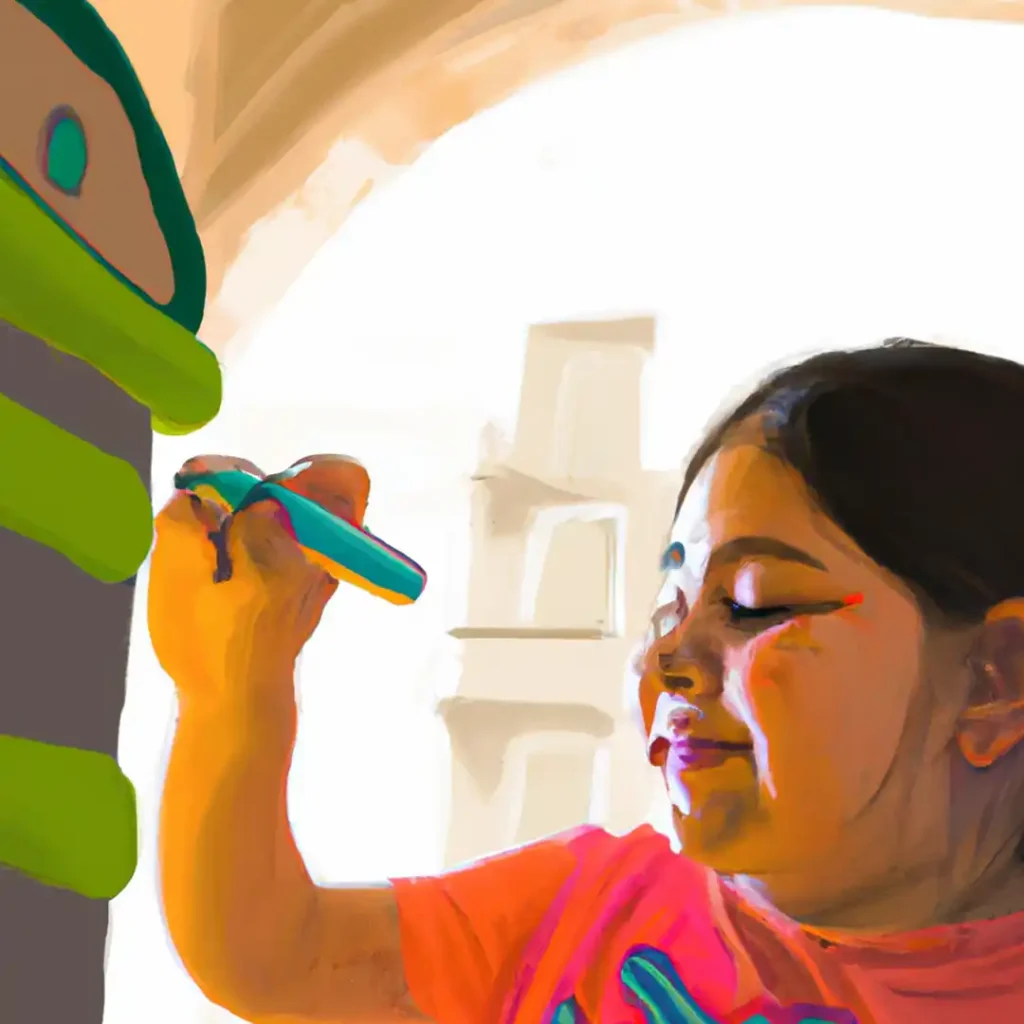In recent years, the educational realm has experienced a transformative evolution, a metamorphosis propelled by advancements in technology and an acute understanding of diverse learning needs. As the global classroom becomes increasingly interconnected and the traditional chalk-and-board methods give way to dynamic, interactive platforms, there’s a clear shift in how educators approach teaching.
The Evolving Landscape of Education and Technology
Traditionally, the classroom was a physical space where students congregated, all receiving the same form of instruction regardless of their individual needs or abilities. Fast-forward to today, and the contours of this landscape have drastically changed. EdTech, or educational technology, has permeated classrooms, reshaping not only the environments in which we teach but also the methodologies we employ.
We’ve transitioned from linear, one-size-fits-all instructional models to flexible, multifaceted approaches. This shift is fueled by an array of digital tools—each designed to cater to a specific learning style or need, ensuring that education is not just uniform but also universally accessible and adaptable.
The Role of Digital Tools in Modern Classrooms
Digital tools have emerged as powerful allies for educators. These tools—ranging from simple apps to intricate platforms—serve a dual purpose. Firstly, they allow educators to tailor their instruction, ensuring that content resonates with each student. Secondly, they empower students, granting them autonomy in their learning journey and providing resources that align with their individual pace, preference, and potential.
Furthermore, in the backdrop of a global pandemic that catapulted the world into remote learning, the importance of digital tools has become undeniably evident. They bridged the gap between educators and students, ensured continuity in learning, and, most importantly, underscored the fact that with the right resources, education can transcend physical boundaries.
The Imperative of Differentiated Instruction
Education, at its core, is a deeply personal journey. While curricula aim to provide a standardized framework, the fact remains that every student arrives at the classroom door with unique experiences, abilities, and aspirations. This richness of individuality demands an education system that is adaptive and responsive.
Brief on Diverse Learners and Their Unique Needs
Diverse learners encompass a wide spectrum. Some students might grapple with learning disabilities, requiring more visual or tactile methods of instruction. Others might be gifted, craving advanced materials and accelerated pacing. Cultural backgrounds, linguistic nuances, socio-economic factors, and even emotional states further add layers to this diversity.
For instance, visual learners might grasp concepts better through charts and infographics, while auditory learners might benefit more from podcasts or lectures. Kinesthetic learners, on the other hand, thrive in environments that incorporate movement and tactile experiences. Recognizing and catering to these myriad needs is paramount in a modern educational setting.
Challenges in Traditional Teaching Methods
The traditional teaching model, often likened to the “factory model,” operated on uniformity. Every student, regardless of their unique learning needs, was often subjected to the same method of instruction, the same pace of learning, and the same assessment criteria. This approach, while efficient for administrative purposes, often left many students either overwhelmed or under-challenged.
Students who didn’t fit the “average” mold were marginalized, leading to gaps in understanding, diminished confidence, and, in some cases, disengagement from the learning process altogether. The system, while streamlined, lacked the flexibility to adapt and adjust to individual student needs.
The Rise and Importance of Differentiated Instruction
Enter differentiated instruction—a pedagogical approach that champions adaptability. Differentiated instruction acknowledges that students differ in their learning preferences, cognitive abilities, and aspirations. Instead of trying to fit students into a pre-existing mold, it aims to reshape the educational environment to fit the student.
Over the last few decades, as research has underscored the limitations of the traditional model and championed the merits of personalized instruction, differentiation has gained traction. It promotes student engagement, boosts academic achievements, and fosters a more inclusive classroom environment. With digital tools now at our disposal, the potential for differentiated instruction has been amplified, promising a classroom experience that is both personalized and powerful.
Digital Tools: Bridging the Gap

In today’s digital age, educators are no longer limited to the four walls of a classroom or the pages of a textbook. A vast array of technological innovations stands ready to augment their teaching arsenal, ensuring that the diverse needs of learners are not only recognized but also effectively addressed.
How Technology Empowers Differentiation
At its essence, differentiation requires adaptability. Digital tools bring that adaptability to the fore, offering dynamic platforms that can be tailored to individual needs. Whether it’s an adaptive learning platform that adjusts its content based on a student’s performance or an interactive e-book that offers resources at varied complexity levels, technology facilitates personalization.
Moreover, digital tools provide educators with invaluable insights. Analytics and reporting functionalities allow teachers to monitor student progress in real-time, identifying areas of strength and those in need of intervention. With this data in hand, educators can make informed decisions, ensuring that instruction is aligned with each student’s current requirements.
Benefits of Using Digital Tools for Diverse Learners
Personalized Learning Paths: Each student can journey through a curriculum at their own pace, diving deeper into topics of interest and spending more time on challenging areas.
Engagement and Motivation: Interactive tools, gamified platforms, and multimedia resources capture students’ attention, ensuring that learning becomes an immersive experience.
Accessibility: For students with disabilities, digital tools can be a game-changer. Features like text-to-speech, adjustable font sizes, and interactive simulations ensure that content is accessible to all.
Collaboration: Digital platforms often foster collaboration, allowing students to engage in group activities, share insights, and learn from peers across the globe.
Continuous Feedback: With instant quizzes, assessments, and dashboards, students receive real-time feedback, allowing for timely interventions and affirmations.
In bridging the gap between diverse learning needs and effective instruction, digital tools not only enhance the learning experience but also ensure that every student, regardless of their background or ability, has a fair shot at academic success.
Essential Digital Tools for Differentiation
Harnessing the power of technology, educators can now tap into a plethora of digital resources designed to support differentiation. These tools not only recognize the varied needs of students but actively adapt, ensuring a tailored learning experience. Let’s delve into some of the essential tools that are revolutionizing differentiated instruction.
Adaptive Learning Platforms: These are sophisticated platforms that utilize algorithms to adjust content and resources based on individual student performance. As students interact with the platform, it ‘learns’ about their strengths, weaknesses, preferences, and pacing.
Benefits:
Dynamic Content Delivery: Content evolves based on real-time student performance, ensuring challenges and support where needed.
Data-Driven Insights: Provides educators with analytics about student progress, highlighting areas of mastery and those requiring intervention.
Interactive E-Books: Digital textbooks that go beyond static text. They come embedded with multimedia elements—videos, quizzes, simulations, and more—to cater to diverse learning modalities.
Benefits:
Engaging Content: The multimedia elements capture attention, catering to auditory, visual, and kinesthetic learners.
Flexibility: Allows students to interact with content, annotating, highlighting, and even adjusting reading levels in some cases.
Digital Assessment Platforms: Online platforms that allow educators to design a variety of assessments, from quizzes to complex projects, tailored to different learning needs.
Benefits:
Varied Assessment Types: From multiple-choice questions to interactive projects, educators can design assessments that cater to different strengths.
Instant Feedback: Automated grading provides immediate feedback, helping students understand areas of improvement.
Collaborative Learning Tools: Digital platforms that facilitate group-based learning, allowing students to collaborate on projects, share resources, and engage in discussions.
Benefits:
Peer Learning: Enables students to learn from each other, fostering a sense of community and collaboration.
Diverse Perspectives: Group work allows students to be exposed to different viewpoints, enhancing their understanding of subjects.
Visual Learning Aids: These tools leverage graphics, simulations, videos, and other visual content to convey complex concepts in an easy-to-understand manner.
Benefits:
Clarifies Complex Ideas: Visual representations can simplify intricate concepts, making them more accessible.
Caters to Visual Learners: These aids are especially beneficial for students who best understand information when it’s presented visually.
Looking into some of these Platforms
The vast digital landscape boasts a plethora of tools tailored for diverse educational needs. While each offers its own set of features, benefits, and limitations, selecting the right tool for your specific context is crucial. Let’s dive deeper into some top digital tools, examining their features, advantages, drawbacks, and ideal learning scenarios.
Features:
- Platform for communication between teachers, students, and parents.
- Integrated assignment and grading system.
- Library of resources and collaborative spaces.
Pros:
- Streamlined communication within the educational community.
- Extensive resource library aids in content differentiation.
- Integration with other educational apps and platforms.
Cons:
- The user interface may not be intuitive for everyone.
- Requires a steady internet connection for optimal functionality.
- Suitable learning environments: Ideal for blended classrooms and distance learning, given its strong emphasis on communication and collaboration.
Features:
- AI-driven differentiated lesson plan creator.
- Worksheet generator tailored to diverse learning needs.
- Adaptive tiered reading material creator.
- Intelligent feedback system for written assignments.
- Question generator based on provided text.
- Automated report card comment generator.
Pros:
- Comprehensive toolset for diverse instructional needs.
- Streamlines lesson planning and assessment processes.
- All features are available completely free of charge.
- Provides high-quality, AI-driven content that can be easily integrated into lesson plans.
Cons:
- Does not record or track student progress.
- Lacks storage or archival features for users to store their work.
- Might require external tools or platforms for optimal organization.
Suitable learning environments: Perfect for teachers seeking to integrate AI-driven instructional tools without the need for tracking or storage features. Ideal for schools on a tight budget but looking to leverage technology for enhanced learning experiences.
The Teachers’ Blog AI Tools showcases the potential of artificial intelligence in reshaping the educational landscape. While it offers an array of invaluable features for content creation, educators might need to rely on other platforms or methods for tracking and storage. However, given its cost-free nature, it provides unparalleled value in lesson planning and content differentiation.
Kotobee
Features:
- Comprehensive e-publishing platform for creating interactive e-books.
- Allows integration of rich media like videos, 3D models, and interactive questions.
- Customizable branding to maintain consistency and professionalism across publications.
- Export flexibility with options including EPUB, MOBI, PDF, Web apps, and native applications for iOS and Android.
- Library management capability for controlling access and organizing a collection of e-books.
- Seamless integration potential with Learning Management Systems for academic contexts.
Pros:
- Intuitive user interface, making the e-book creation process smooth even for novices.
- Extensive range of export formats ensures accessibility across a variety of devices and platforms.
- Enhanced reading experience through embedded interactive content, a boon especially for educational materials.
- Kotobee Cloud feature offers convenient online hosting of e-books, simplifying access and updates.
Cons:
- While there’s a free version, unlocking all of Kotobee’s potential requires a paid subscription.
- The platform’s more advanced features may present a steeper learning curve, necessitating tutorials or additional learning time.
Suitable learning environments:
Kotobee is ideal for educators and trainers aiming to offer interactive and rich content to students. It’s also a boon for authors venturing into self-publishing across diverse platforms and for institutions or enterprises desiring a centralized digital publication library.
Khan Academy
Features:
- Comprehensive library of lessons in various subjects.
- Adaptive practice exercises with real-time feedback.
- Dashboards for tracking student progress.
Pros:
- Self-paced learning adapts to individual student needs.
- Wide range of subjects catered to.
Free access ensures inclusivity.
Cons:
- Lacks personalized communication tools.
- May not cover every curriculum in-depth.
- Suitable learning environments: Best for supplementing classroom teaching and for students looking for additional practice in specific areas.

Features:
- Digital flashcards for various subjects.
- Games and quizzes for enhanced learning.
- Collaborative features for group study.
Pros:
- Interactive learning promotes engagement.
- Customizable flashcards cater to diverse learning needs.
- Mobile app allows for learning on the go.
Cons:
- Premium features require a subscription.
- Relies heavily on user-generated content, which may vary in quality.
Suitable learning environments: Ideal for revision and collaborative study sessions. Great for learners who benefit from repetition.
Features:
- Platform for assignment distribution, grading, and feedback.
- Integration with Google Drive for easy sharing of resources.
- Collaborative tools like Google Docs and Slides embedded.
Pros:
- Streamlined workflow between teachers and students.
- Real-time collaboration on documents.
- Familiar interface for those acquainted with Google services.
Cons:
- Limited customization options for classroom layouts.
- Dependent on the Google ecosystem.
Suitable learning environments: Perfect for schools and institutions already integrated with Google services. Supports both in-person and remote learning.
Features:
- Adaptive learning platform focused on improving writing skills.
- Personalized quizzes and assignments based on students’ interests.
- Detailed feedback on grammar, punctuation, sentence structure, and style.
- Peer review functionality allowing students to assess and learn from each other’s work.
- Curriculum-aligned pathways covering a wide range of writing topics.
Pros:
- Engages students with content tailored to their personal interests.
- Offers actionable feedback, helping students understand and rectify their mistakes.
- Provides a holistic approach to writing, covering everything from basic grammar to argumentative essays.
- Supports teacher-led instruction with customizable assignments and real-time class data.
- Peer review system fosters collaborative learning and self-assessment skills.
Cons:
- Premium features and full access to content require a subscription.
- As with most writing platforms, might not capture all nuances in specialized fields.
- Some students may find the interface less intuitive initially.
Suitable learning environments: Perfect for middle and high school settings where emphasis is placed on developing robust writing skills. NoRedInk is designed to cater to both individual learners and entire classrooms, making it a versatile tool for educators.
NoRedInk stands out in the realm of digital writing platforms, primarily due to its personalized learning approach. By aligning content with students’ interests, it manages to sustain engagement while offering a comprehensive curriculum to refine writing skills. While it’s a powerful tool in its own right, educators and students alike may need a few sessions to fully familiarize themselves with its range of features.
Features:
- Math-centric platform with gamified learning experiences.
- Tailored questions adjust to students’ strengths and areas of improvement.
- Real-time data on student performance.
Pros:
- Engaging game-based interface appeals to students.
- Covers a wide range of math topics across various grades.
- Differentiated instruction inherent in adaptive questions.
Cons:
- Focus limited to mathematics.
- Some features behind a premium subscription.
Suitable learning environments: Best for students who need engagement and motivation in learning math. Ideal for both classroom and home use.
Features:
- Virtual bulletin board for collaborative projects.
- Integration of multimedia: text, images, videos, links, and more.
- Multiple layout options and templates.
Pros:
- Highly interactive platform for brainstorming and group projects.
- Accessible from various devices.
- Intuitive interface.
Cons:
- Limited posts for the free version.
- Needs internet connectivity for optimal use.
Suitable learning environments: Great for collaborative projects, brainstorming sessions, and class discussions in both physical and virtual classrooms.
Features:
- Platform for creating interactive lessons.
- Features polls, quizzes, videos, and VR field trips.
- Real-time feedback and post-session reports.
Pros:
- Enhances teacher-led instruction with interactivity.
- Engages students with a variety of content types.
- Provides insights on student participation and understanding.
Cons:
- Premium features require subscription.
- Might have a learning curve for first-time users.
Suitable learning environments: Ideal for interactive classroom sessions, be it virtual or in-person, aiming to gauge student understanding in real-time.
Features:
- Student-driven digital portfolios.
- Multimedia content creation: draw, record voice, use videos.
- Facilitates teacher, student, and parent communication.
Pros:
- Empowers student ownership of learning.
- Facilitates sharing of assignments and feedback.
- Engages parents in the learning process.
Cons:
- Navigation can be a bit overwhelming initially.
- Premium features come at a cost.
Suitable learning environments: Perfect for classrooms focusing on student-centered approaches and parental engagement. Effective for both primary and secondary education.
Implementing Digital Tools in the Classroom

The incorporation of digital tools in the classroom, while promising, demands careful planning and execution. The effectiveness of these tools is largely influenced by how they are introduced, how educators adapt to them, and how their impact is evaluated. Below are some guidelines to ensure a seamless and productive integration.
Best Practices for Introducing and Integrating Tools
Assess Needs Before Selection: Before diving into a tool, educators should first identify the specific needs of their learners. Choosing a tool should be based on its potential to address these requirements.
Pilot Testing: Before a full-scale implementation, test the tool with a smaller group. This can offer insights into potential challenges and areas of improvement.
Integration with Existing Curriculum: Rather than replacing traditional teaching methods, digital tools should complement them. Find ways to naturally weave them into current lesson plans.
Provide Clear Instructions: Ensure that students know how to use the tool effectively. This might involve hands-on demonstrations or guided sessions.
Training and Development for Educators
Ongoing Professional Development: As digital landscapes evolve, so should the knowledge of educators. Schools should invest in regular training sessions.
Peer Sharing Sessions: Encourage educators to share their experiences, tips, and best practices with colleagues. This collaborative approach can expedite the learning process.
Access to Resources: Ensure that educators have access to user manuals, tutorials, and online forums related to the tool.
Seek Feedback: Encourage educators to provide feedback on the tools. Their insights can be invaluable for refining the implementation strategy.
Measuring the Impact of Digital Tools on Learning Outcomes
Define Clear Metrics: Establish what you aim to achieve with the digital tool. This might range from improved test scores to enhanced student engagement or better assignment submissions.
Regular Assessments: Use formative assessments to gauge the immediate impact of the tool. Summative assessments can offer insights into long-term effects.
Feedback from Students: Encourage students to share their experiences. Their feedback can highlight areas where the tool has been beneficial and where it might need tweaks.
Data Analytics: Many digital tools come with built-in analytics. Utilize these to get a quantitative measure of the tool’s impact. Monitor metrics like usage frequency, scores on digital quizzes, and time spent on tasks.
Reflect and Refine: Based on collected data and feedback, make necessary adjustments to the integration process. Continuous reflection ensures that the tool remains beneficial in the ever-evolving educational landscape.
Successfully implementing digital tools in the classroom doesn’t just enhance the learning experience; it prepares students for a world where digital fluency is integral. However, the key lies in careful planning, regular training, and continuous assessment of the tool’s impact.
Challenges and Solutions
Integrating digital tools into the classroom environment undoubtedly brings a plethora of advantages. However, it’s not without its challenges. By acknowledging potential hurdles and equipping ourselves with proactive solutions, we can optimize the experience for both educators and learners.
Potential Hurdles in Using Digital Tools
Technological Hitches: From software glitches to hardware malfunctions, technological issues can disrupt lessons and lead to frustration.
Resistance to Change: Both educators and students, accustomed to traditional teaching methods, might resist or struggle with adapting to new digital tools.
Unequal Access: Not all students might have equal access to devices or the internet at home, leading to disparities in learning opportunities.
Distractions: With devices comes the potential for distractions, be it unrelated websites, games, or social media.
Data Privacy Concerns: Using online platforms raises questions about the safety and privacy of student information.
Over-reliance on Technology: There’s a risk that both teachers and students might start depending too heavily on digital tools, sidelining other essential teaching methods.
Proactive Solutions to Common Challenges
Regular Technical Checks and Back-up Plans: Conduct frequent checks of the software and hardware. Always have a contingency plan in case of technological hitches – this might be a traditional method of teaching the same material or using alternative tools.
Training and Familiarization Sessions: Counteract resistance by offering detailed training sessions for educators. Additionally, hold introductory sessions for students to familiarize them with the new tools.
Incorporate Blended Learning: To address the challenge of unequal access, use a blended learning approach. Combine online digital tools with offline activities to ensure every student has an opportunity to learn.
Strict Usage Guidelines: Set clear rules about appropriate device usage during lessons. Utilize monitoring software if necessary to keep distractions at bay.
Choose Platforms with Strong Data Protection Policies: Before integrating any digital platform, scrutinize its data privacy policies. Ensure that student information remains protected and is not shared with third parties without consent.
Balanced Integration: While digital tools are advantageous, they should be used as a complement to traditional teaching methods. Ensure that there’s a balance to prevent over-reliance on technology.
Conclusion
As we navigate through the 21st century, the synergy between education and technology becomes increasingly evident. Digital tools, with their immense potential, are not just supplementary elements in modern classrooms—they are transformative agents that reshape how educators teach and how students learn.
The transformative potential of these tools cannot be overstated. They cater to the individual needs of students, providing them with personalized learning experiences that were previously unimaginable. From adaptive platforms that gauge a student’s proficiency and adjust content accordingly, to collaborative tools that promote group-based problem-solving, the digital realm has enriched the educational space in multifaceted ways.
Moreover, as we look towards the future, it becomes clear that differentiated instruction, powered by digital tools, is more than a passing trend—it’s the cornerstone of the next educational era. Traditional ‘one-size-fits-all’ teaching methods are gradually being overshadowed by approaches that recognize and honor the unique capabilities, interests, and needs of each student. In this tech-driven era, differentiation is not just an instructional strategy; it’s a commitment to ensuring every learner thrives.
However, as with all transformative shifts, the journey is ongoing. The challenge for educators is not just to adopt these tools, but to continuously refine and adapt their methods in line with technological advancements. But if the trajectory of recent years is any indicator, the future of education—personalized, inclusive, and tech-empowered—is promising.


